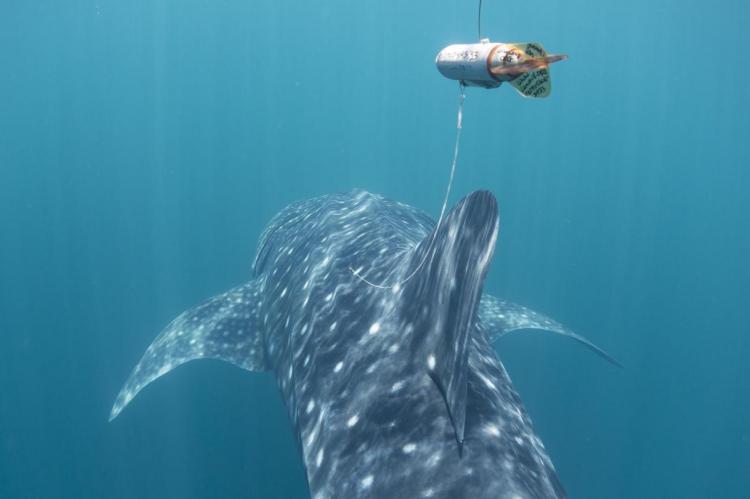Philippine waters essential for whale sharks
Research involving the tracking of juvenile whale sharks has highlighted the importance of the Philippine archipelago for the species.
The Philippines plays host to the third largest known population of whale sharks, and is thus an important hotspot for the species.
A study involving 17 juvenile whale sharks tagged at different locations in the archipelago emphasises this importance, and represents the most complete tracking study of whale sharks in the country.
For this study, the whale sharks were tagged with Wildlife Computers SPOT5 satellite tags between April 2015 and April 2016. This was done at three different locations in the Philippines: Panaon Island (Southern Leyte), northern Mindanao (Misamis Oriental and Surigao del Norte) and Tubbataha Reefs Natural Park (Palawan).
The tags allowed the whale sharks' location to be transmitted to passing ARGOS satellites when the animal breaks the surface. The research team, hailing from Large Marine Vertebrates Research Institute Philippines (LAMAVE), Marine Megafauna Foundation and Tubbataha Management Office, could track their movements almost in real-time.
The findings of this study, which was published in the PeerJ journal, indicated that all the whale sharks remained within the Philippines during the tracking period. In fact, one of the subjects, which was tagged in Tubbataha Reefs Natural Park, appeared to have swum more than 2,500 kilometres, through the Sulu and Bohol Seas and into the Pacific.
It was also discovered that each whale shark averaged 47 kilometres a day, indicating their mobility. "This research highlights the high mobility of whale sharks, even juveniles, and the need for broader scale management and conservation plans for this endangered species," said lead author Gonzalo Araujo, LAMAVE's Executive Director.
Considering the proximity of this whale shark population to fisheries in the broader region (South China Sea), it is imperative to monitor the population to find out if it is in recovery or continuing to decline.





























